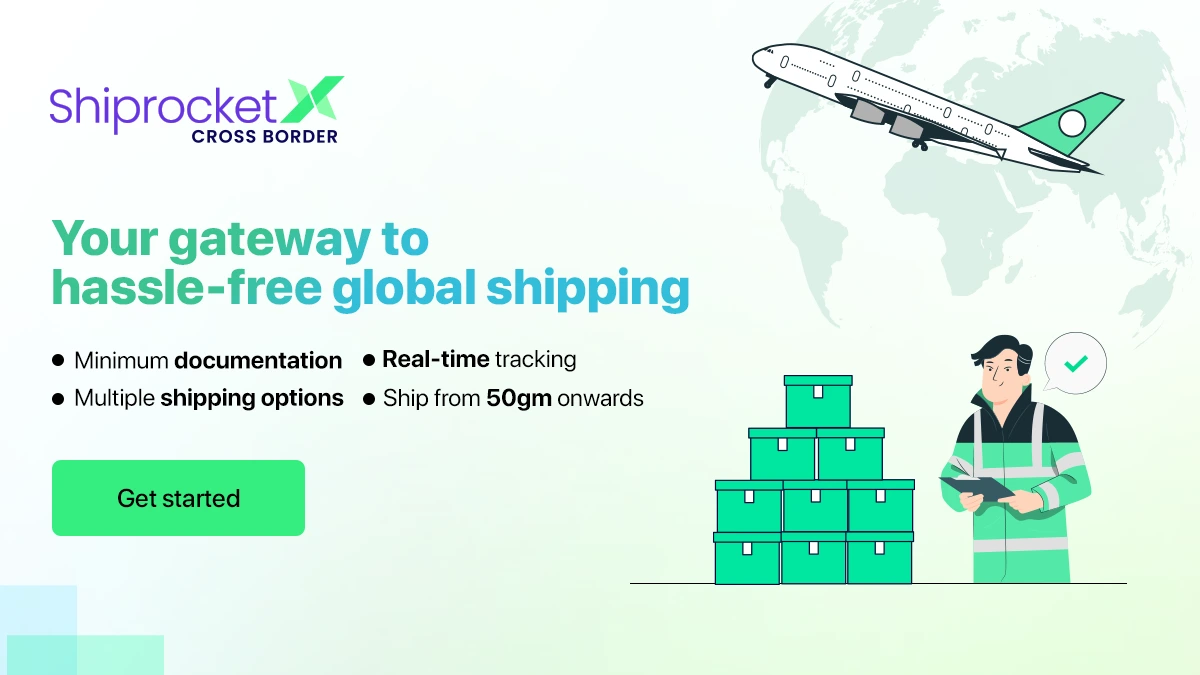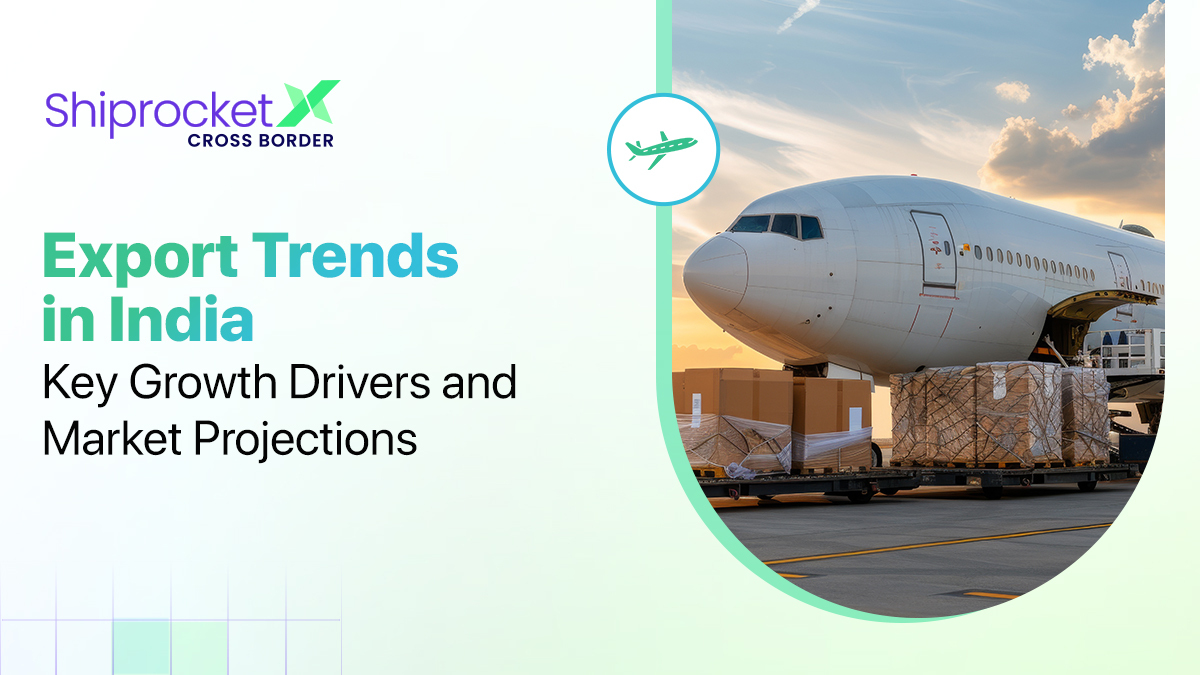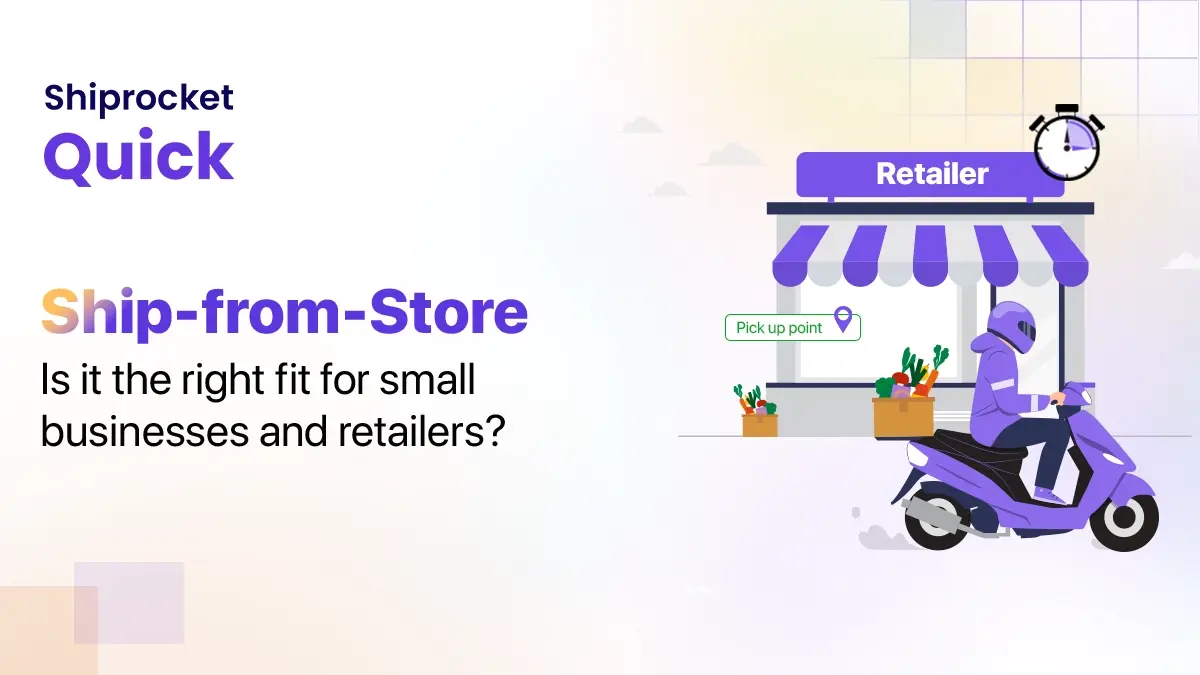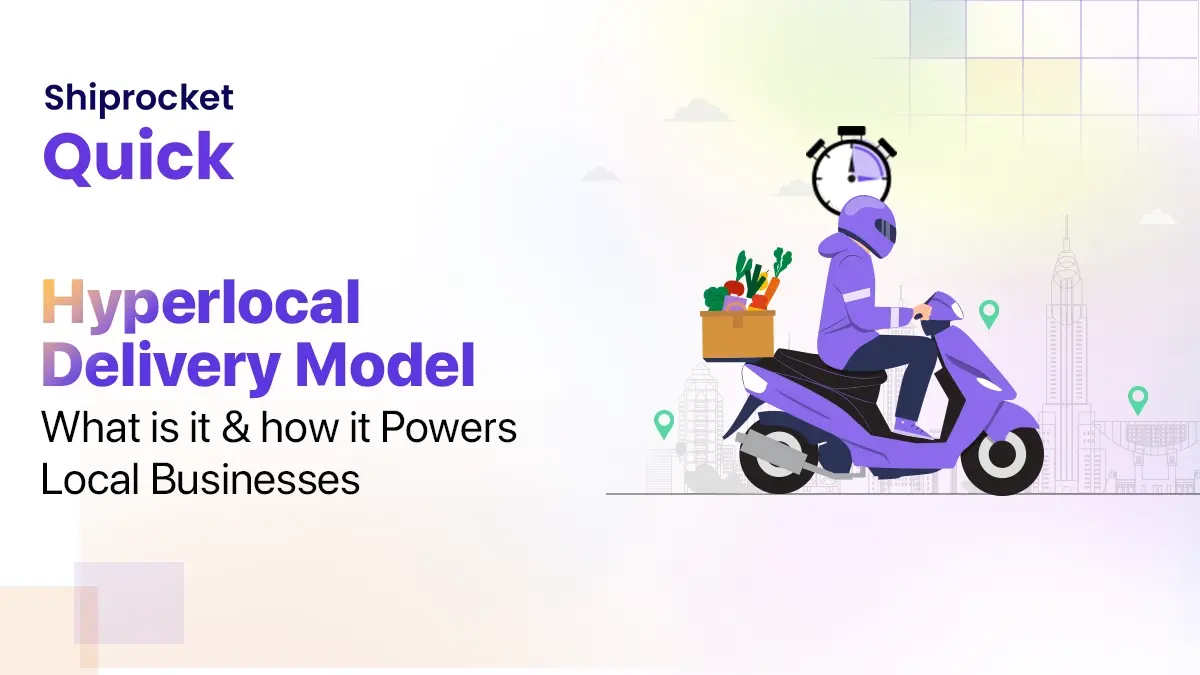Export From India: A Guide to Connecting with International Buyers
- Understanding the Essentials of Indian Exports
- Understanding the Basics
- Establishing Your Export Business
- Strategies for Establishing Connections with International Buyers from India
- B. Leveraging Governmental Support to Identify Export Buyers
- C. Modern Online Techniques to Attract International Buyers
- Ship Rocket X: Elevate Your Global Reach with Effortless International Exports!
- Conclusion
In international trade, the primary concern for exporters often centers around the challenge of identifying trustworthy international buyers and securing export orders. The interlinked nature of today’s global economy and the cross-border cash flow necessitates the need to have knowledge of the fundamentals of exports from India. It is critical to the success of every export business operating in this country.

India’s total exports (Merchandise and Services combined) in April-October 2023 are valued at around USD 437.54 billion. To benefit from this lucrative industry, you may also investigate new markets and join the global trade network. It is essential for both beginner and experienced exporters to understand the intricacies of this dynamic system. This calls for a thorough comprehension of strategies and solutions in order to make significant connections within the extensive field of international trade.
Here, we aim to provide useful knowledge that will enable you to take advantage of possibilities and overcome obstacles in the ever-changing market of imports and exports.
Understanding the Essentials of Indian Exports
Let’s explore the ins and outs of exports from India. Whether you’re a small business dreaming of expansion or a big corporation trying to fine-tune your global supply chain, you need to understand the essentials of Indian exports.
Understanding the Basics
Let’s dive into the fundamental principles of international trade. Know things like why it’s essential, how countries benefit, and the role of trade agreements. Grasp why importing and exporting matter for economic growth.
- Essential Import and Export Procedures:
Learn about the important export procedures, paperwork related to that, customs clearance, and the shipping process. Whether bringing in goods from Asia or sending tech to Europe, gain insights into export policy to make it less daunting.
- Mitigating Risks and Compliance:
The world of international trade has its risks, from currencies behaving unexpectedly to political roller coasters. Navigate these by exploring risk management strategies and ensuring you follow the rules to keep your business safe and sound.
- Building Successful Import-Export Strategies:
It’s time to craft your game plan. Tailor a strategy for your specific market and product. Learn about market research, find opportunities, and create competitive advantages that stand the test of time.
- Leveraging Technology and eCommerce:
Break down how technology and online commerce can boost your international trade game. From digital marketplaces to smooth payment systems, know about the latest tools.
- Navigating Trade Agreements and Tariffs:
Trade agreements can be tricky. Look at arrangements, their meaning, and how to use tariff concessions to your advantage. No more feeling lost in the trade agreement maze.
Establishing Your Export Business
Here’s how you can establish your export business:
- Setting Up a Unit:
If you’re considering starting an export business, guide yourself through the setup process. Whether it’s a one-person show, a partnership, or a full-fledged company, you should have a registered unit.
- Opening a Bank Account:
Banking can be confusing, especially when it involves foreign exchange. Understand the steps and open a current account with a bank that deals in foreign transactions.
- Obtaining PAN (Permanent Account Number):
Every exporter and importer needs a PAN. So, it is necessary to obtain one from the Income Tax Department.
- Obtaining IEC (Importer-Exporter Code) Number:
IEC might sound complex but fear not. The process includes several steps, like filing an online application, paying the fee, and submitting the necessary documents to get your IEC number.
Now that you know a little about the essentials of Indian trade, let’s look at strategies for establishing connections with a global consumer base.
Strategies for Establishing Connections with International Buyers from India
To effectively attract international buyers, you can take several strategic steps. Consider the following comprehensive guide tailored for your success:
- Conventional Approaches to Locate Potential Buyers
- Show Up at International Events:
Attend trade events, expos, and conferences where international buyers hang out. It’s a chance to meet and connect with potential buyers worldwide.
- Study Your Target Markets:
Figure out which countries or regions want what you’re selling. Learn about their culture, trends, and business practices to tailor your approach.
- Join Global Business Groups:
Be part of business networks that focus on global trade. They bring together businesses and international buyers. Use these networks to showcase your stuff and make connections.
- Work with Export Programs:
Check out local and national export programs that help businesses go global. They offer resources and connections to international buyers. Take part in their events and use their know-how to navigate global trade.
- Adjust Your Marketing:
Make your marketing fit the audience in different regions. This might mean translating materials, understanding cultural preferences, and meeting the needs of international buyers. Show them you get what they want.
- Talk to Trade Consultants:
Connect with trade consultants who know the regions you’re targeting. They can guide you on how to get into new markets, follow rules, and understand local culture.
- Offer Good Deals:
Ensure your prices, shipping, and payment terms are competitive and appealing to international buyers. Being flexible and meeting different market needs gives you an edge.
- Get Your Documents Right:
Make your export process smooth by having clear and accurate documents. This includes product details, prices, shipping info, etc., following international trade rules. Clear communication builds trust.
- Check Out Virtual Trade Shows:
Besides physical events, explore online platforms where businesses connect globally. Show your products, talk to potential buyers, and have virtual meetings to discuss business.
- Stay Updated on Global Trends:
Keep an eye on worldwide economic trends and global news. Understand what’s happening globally to adjust your plans and tackle challenges targeting international buyers.
B. Leveraging Governmental Support to Identify Export Buyers
Leveraging the various government initiatives to support exporters can significantly aid you in identifying potential international buyers. Here’s a strategic approach to maximize the benefits of these initiatives:
- Stay Updated:
Keep yourself informed about the latest government plans for exporting. Watch out for updates on official channels, attend webinars, and read trade-related articles to stay in the loop.
- Get Involved in Export Programs:
Join programs run by export support groups backed by the government. These offer chances to connect with international buyers. Attend their events, seminars, and workshops to grow your knowledge and network.
- Use Online Platforms:
Take advantage of government digital platforms, like the one for Certificates of Origin (CoO). They make your business more visible, simplify paperwork, and connect you with potential buyers using Free Trade Agreements (FTA).
- Be Part of Trade Shows:
Actively participate in international trade shows supported by the government, such as the Global Exhibition on Services. These events draw in potential international buyers and give you a stage to showcase your products or services globally.
- Use the MAI Scheme:
Take advantage of the support from the Market Access Initiative (MAI) scheme. It helps with export research, product development, and taking part in events like Buyer Seller Meets (BSMs) abroad. This can help you find and connect with potential international buyers in your industry.
- Understand Duty-Free Schemes:
Learn about duty-free import schemes like the Advance Authorization and EPCG. This knowledge can be handy when talking to potential buyers, giving them cost advantages and competitive pricing.
- Work with Export Consultants:
Collaborate with export consultants who know government policies well. They can help you navigate the complexities of international trade and find potential buyers who match your business goals.
C. Modern Online Techniques to Attract International Buyers
In today’s globalized market, leveraging modern online techniques is crucial for attracting international buyers to your business. Here are some effective strategies to enhance your online presence and capture the attention of a global audience:
- Adapt Your Website for Global Appeal:
- Explore Your Market: Identify products or cultural aspects with a strong international market. Update your website content, product descriptions, and navigation to appeal to a global audience.
- Tailor Your Content: Develop a strategy tailored to specific regions or cultures. Create region-specific content that attracts and engages potential customers in targeted markets.
- Engage in Regular Blogging:
- Your Content Matters: Periodically update your blog with original and quality content to boost your online visibility.
- Your SEO Boost: Improve your content’s search engine optimization (SEO) to enhance rankings. Stick to a consistent blogging schedule to establish your authority over time.
- Invest in Digital Marketing:
- Speak to Your Audience: Tailor online advertisements to appeal to your target audience abroad. Allocate a budget for paid marketing based on your industry and audience research.
- Enhance Your SEO: Improve your website’s SEO to increase organic traffic. While paid marketing is an option, effective SEO is crucial in attracting international customers.
- Utilize Social Media:
- Discover Your Niche: Explore niche markets on social media platforms. Identify affordable advertising options and engage with potential customers through targeted content.
- Connect Globally: Leverage the global reach of social media to connect with diverse audiences. Showcase your offerings and engage with followers to build an international community.
- Prioritize Your Customer Service:
- Be Available: Be readily available to answer questions, address concerns, and engage with potential buyers. Provide clear and kind service throughout your sales process.
- Build Relationships: A positive customer experience can lead to repeat business and recommendations. Prioritize your customer service to establish a favorable reputation and build long-term relationships.
Ship Rocket X: Elevate Your Global Reach with Effortless International Exports!
Experience seamless international exports using Shiprocket X. Ship to 220+ countries with transparent B2B deliveries via air, ensuring effortless cross-border shipping. The user-friendly platform simplifies eCommerce exports, offering hassle-free customs clearance and automated workflows for efficient order processing. Stay connected with real-time updates through Email and WhatsApp. The branded tracking page builds loyalty, and simplified returns management ensures a smooth process. Shiprocket X is a comprehensive solution for successful international exports, making global trade accessible and efficient.
Conclusion
In the import-export business, international shipping is a big step. Exporting strengthens international relations and provides access to diverse technologies and markets. To make your export strategies effective, it’s crucial to understand your target market, economic conditions, and consumer behavior. Mix traditional and digital methods, like online platforms and social media, for a successful journey. Start by looking for partners online, gather contacts, and consider promising a meeting in person. Though it may take a while, using both approaches can lead to a successful import-export business for you.
Conduct thorough research on target regions, analyze consumer behavior, and engage with local networks to gain insights into international market demand.
Refined petroleum (USD 49B), diamonds (USD 26.3B), packaged medications (USD 19.2B), jewelry (USD 10.7B), and rice (USD 10B) are the top export categories as of late.
The steps in export include:
Pre-export stage
Initial export stages
Trade Agreement
Documentary instructions
Order manufacturing and packaging
Freight forwarder selection
Unloading and import procedures
Order delivery








